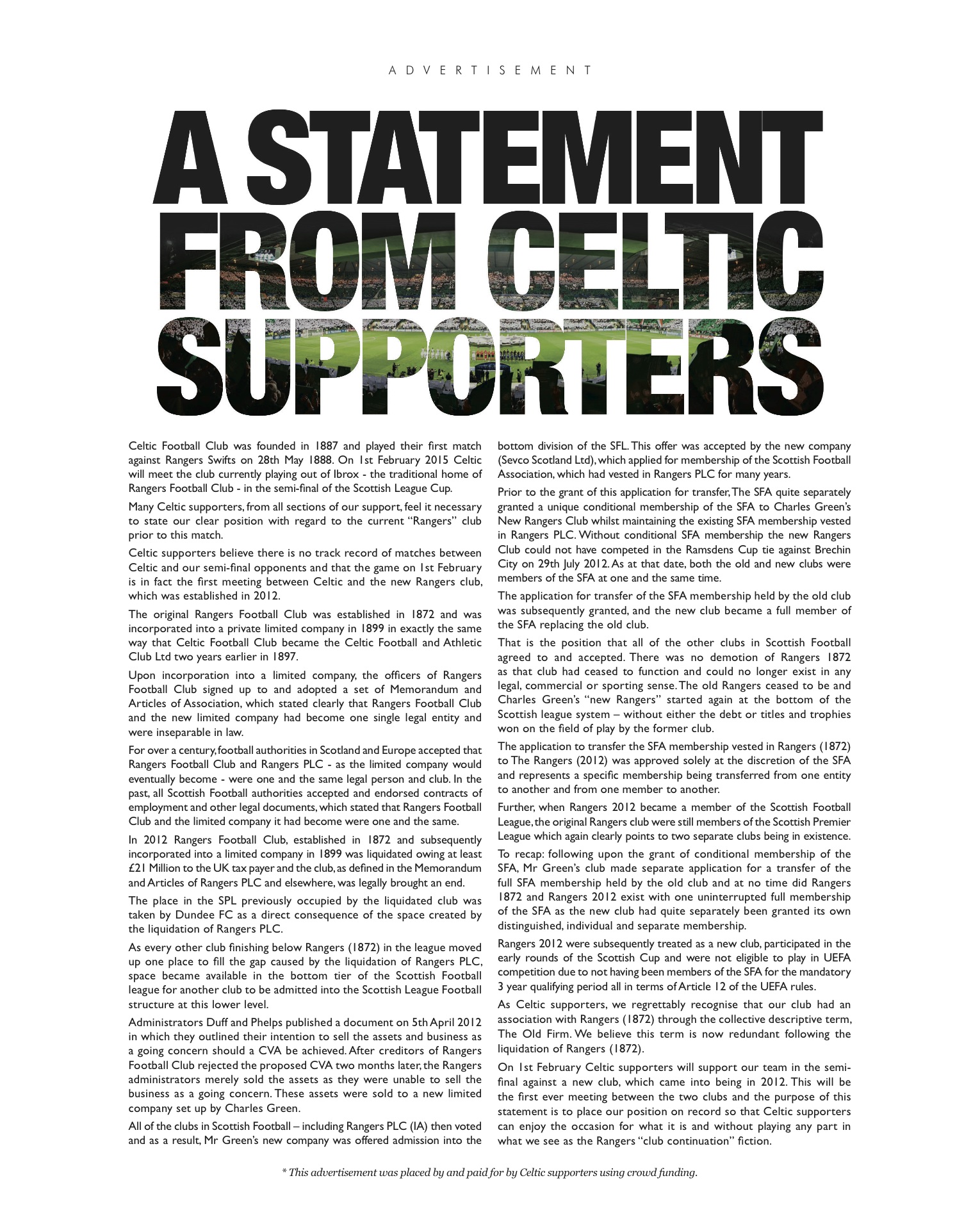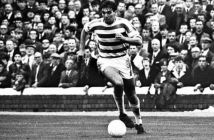Why did you write Tangled Up in Blue?
I felt it was a book that was crying out to be written. Everyone knows the vague outline of two aspects of Rangers history, namely that they had an unwritten ban on Catholics at the club, which was operated for decades and was a feature of the famous rivalry with Celtic, and also that the club recently suffered a catastrophic financial collapse which ultimately led to liquidation.
I thought I’d put the bones on both stories and try to bring it to as wide an audience as possible.
Too often in Glasgow it’s almost as if you can’t see the woods from the trees because of the intensity of the rivalry. I thought I’d try and get above that and write a balanced and objective account, although where I feel the club deserves criticism, over its exclusionary employment practices for example, I don’t shirk from giving it.
You must have been expecting a backlash from the hordes. How has that been?
Inevitably, there will be a backlash from an element of the Rangers support, simply because they don’t take too kindly to criticism of the club, even when it’s justified, and it’s a book about Rangers not specifically aimed at Rangers fans.
It’s a universal story which in the end cannot avoid criticising the subject being examined. There will be people who don’t like that idea and yes it has started already. Ever since April when the publication of the book was announced Follow Follow have had a couple of threads on me, with people posting my picture and slaughtering the book without obviously having ever read it.
I had a photo on my twitter timeline of me in the Celtic shop standing next to copies of my novel Paradise Road which was being stocked there. That was posted on the thread and was more than enough to set a few people off.
Did your own opinions change during your research for the book?
Not really. I lived in Scotland through most of the David Murray years so I’d already followed quite closely what was happening. Murray was the prime culprit because he mismanaged the club’s finances. Even after the warning of the dotcom bubble in the early 2000s, when he declared that Scottish football was basically bankrupt and stepped down from the chairmanship, he still allowed Walter Smith to return to the club a few years later and run up debts of £30m.
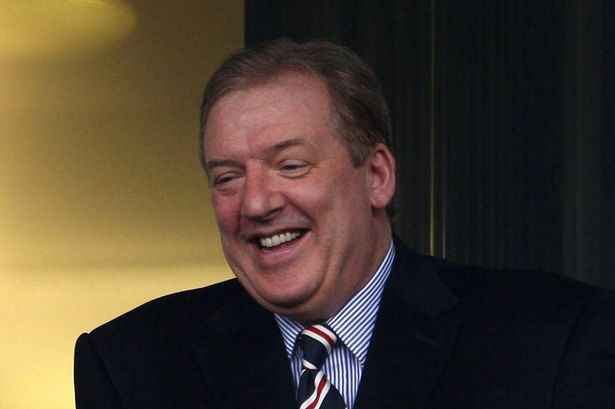
Then the credit crunch hit and delivered a potentially fatal blow. In the end remember it wasn’t the EBT bill which killed the club, but the deliberate policy of living beyond their means. Murray managed to get out and hand over the club to Craig Whyte. Whyte immediately expressed his intention to bring the spending and debts under control, but he was hopelessly out of his element and in the end he was the one they blamed it on.
How does Celtic come out of all this?
Celtic took the decision, back in the final decade of the nineteenth century, that the club would be open to all, explicitly rejecting the ‘Catholics only’ model which had been employed by Hibs in the early years.
They were congratulated on this decision by the Irish owned newspaper the Glasgow Observer at the time, but on the whole there were no fashionably modern notions about political correctness or diverse and pluralist societies back in the day, so it was a bold step by Celtic at the time, but the correct one.
At other times, during the pre-Stein era, it seems clear that Celtic were a club who had lost their sense of direction, playing the role of happy-go-lucky losers in contrast to the stern disciplinarians across the city.
In more recent years, it seems that Celtic have outgrown the ‘Old Firm’ tag, which served both clubs well in the past, but now it seems somehow demeaning that a club like Celtic should be locked in this eternal rivalry with a team from across the city when in fact there is the whole football world out there that Celtic can compare themselves with and set the bar for success and failure against.
Tangled Up in Blue goes back much further that the financial collapse of 2012. When does the story start and why did you go back to the very beginning?
The book goes back to the foundation of Rangers in 1872 by a group of teenagers from Argyll, and explores the largely unknown story, at least until recent years, of the club’s early history. This gives the proper context for what happened subsequently, because Rangers were a mismanaged and wayward club even before Celtic appeared on the scene. The book then concentrates on the two major issues which dogged the club up until 2012, namely religious bigotry and financial malpractice, and tells the full story of both of these aspects of the club’s history.
Were ‘Rangers’ ultimately too big to be allowed to fail?
I think so yes. The two English businessmen who were in the most senior positions in Scottish football in 2012 were literally wetting themselves about the prospect of losing the Ibrox cash cow.
Phrases like Armageddon and social unrest were being used at the time, but in the end those scare tactics failed to get past the fans of the other SPL clubs, who gave clear instructions to their clubs about which way to vote on the Newco in the SPL debate. Similarly, the chairmen of the SFL clubs held their nerve when confronted by Regan and Doncaster’s coercions and simply said no, this is wrong.
In the end when the new club was obliged to enter Scottish football’s fourth tier, few were surprised that the world still continued to spin, with clubs like St Mirren, St Johnstone, Hibs, Inverness, Aberdeen all winning major trophies.
The book ends with the fallout from 2012 concluding with the Supreme Court verdict, yet Lord Nimmo Smith had already reported based on the assumption that the EBT scheme was lawful and this has never been challenged in a court. The wrong decision therefore seem to stand. Why has this been allowed to happen?
The LNS inquiry is a complete anomaly. On the face of it, it reads like a fairly severe rebuke to the activities of Oldco, but in the end it amounted to little more than a slap on the wrists for over a decade’s worth of cheating.
It’s astonishing that Rangers essentially got away with what they did. No wonder Charles Green was elated when he heard the verdict and it provided their fans with the whole ‘obsession’ line of argument, expecting the rest of Scottish football to effectively move in.
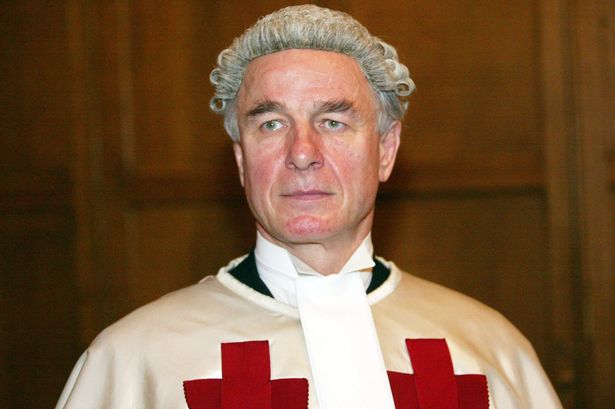
The problem with LNS is that the enquiry’s remit was limited. It covered only the EBT years and excluded the earlier implementation of the DOS scheme, which Rangers had already admitted liability for. This meant that the focus of the inquiry was on a tax avoidance scheme which had not yet been established in court as being unlawful.
This had profound implications because the gist of this was, the scheme was not illegal, other teams could have used it if they wished. The length of time before the supreme court verdict arrived, condemning the EBT scheme, allowed the SFA to simply wash their hands of the issue and come up with the whole ‘rake over the coals’ argument.
To a very large extent, Rangers effectively got away with what they did, and it’s only my opinion but I don’t think any other club in Scotland would have been allowed to do that.
Are there any examples of new information you have uncovered and included in Tangled Up in Blue?
I came across quite a few shocks and surprises when researching the book that I had previously only vaguely been aware of or had never heard of before. For example, in regard to the close connection between Rangers and the Belfast-based shipbuilding firm Harland and Wolff. Many people know about the historic relationship between the two organisations, but not the specifics.
It was H&W who loaned Rangers £90,000 in 1912 as the club were still struggling with the impact and fallout of the first Ibrox disaster in 1902. It seems certain that as a condition of the loan, Rangers agreed to go down the no-Catholics route, much like H&W themselves.
1912 was also the year that John Ure Primrose assumed the chairmanship of Rangers, a man who was so opposed to Irish Home Rule that he split with the Liberal Party in the 1880s and had, on occasion, shared a platform with Edward Carson, the founder of the UVF to express his opposition to the policy.
I also uncovered details of the 1971 Ibrox disaster, which have been around for some time but seem to have been suppressed, and from speaking to people who were involved in the Maurice Johnston to Rangers transfer saga there’s new information on that in the book which has never before been made public.
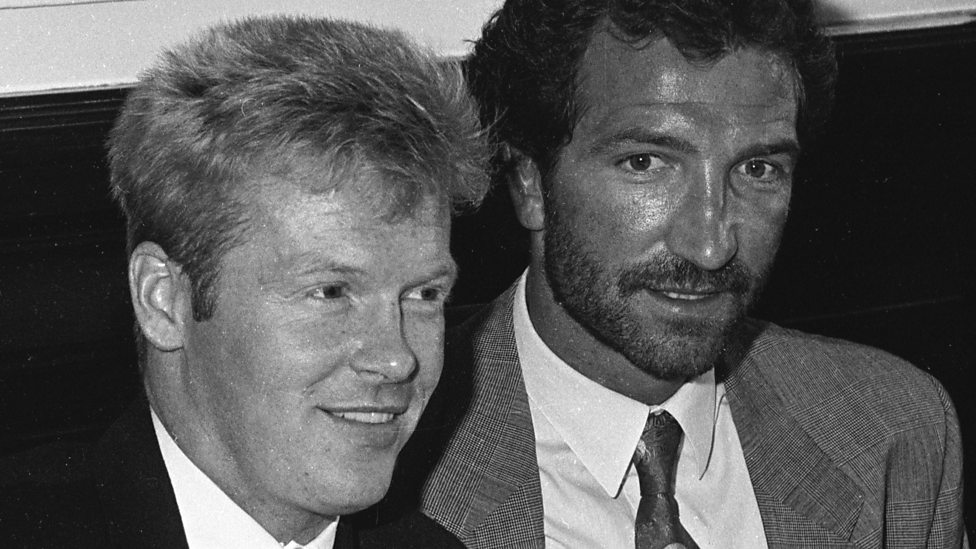
There are numerous other examples, including some more light-hearted revelations, such as Willie Waddell telling his captain John Greig to take care of Claudio Sala, Torino’s new 19 year old wonder boy in the Cup Winners Cup quarter-final in 1972. In fact Sala was 24 and had been around for years, but it worked and Greig scared the shit out of Sala in Turin to such an extent that he never even played in the second leg at Ibrox.
To this day, I assume, Greig still believes that Sala was a soft target, a vulnerable youngster, because that’s how he describes him in his autobiography.
Inevitably Tangled Up in Blue will draw comparisons with Downfall. How do the two books compare?
Downfall is a good book and I used it as part of my research for the final chapters of Tangled Up in Blue. I also took a trip to the National Library of Scotland in Edinburgh to see Phil’s initial reporting of the EBT revelations in the News of the World, a story which I cover in the book.
But really there are not many similarities, if any, between Tangled and Downfall. Phil’s an investigative reporter and his book is a basically a collection of his work as a blogger, with some added notes at the beginning of each chapter. I try to be more of a storyteller, stripping things back all the way to 1872 to see how Rangers’ problems and issues developed over time.
Stylistically, and even in terms of content, the two books are totally different, but hopefully both have their own place and value.
Thanks Stephen, all the best for the book.
Thank you for the support that The Celtic Star has given me, it means a lot.
Tangled Up in Blue is available now on Amazon – order HERE -and at selected Waterstones stores. Please feel free to add a review.
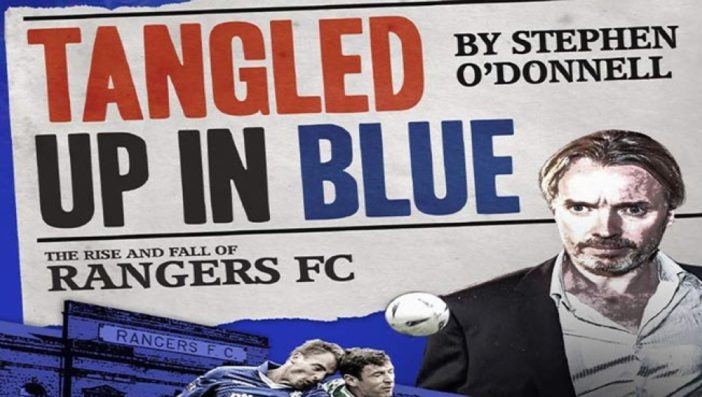
David Potter reviewed Tangled Up in Blue on The Celtic Star earlier this week and you can read that HERE.
We also carried an extract from the book, kindly supplied by the author, where he tells the story of how Rangers got their dates wrong for their centenary celebrations – see HERE.
And just for a reminder, here is the Statement from Celtic Supporters that was published in the Sunday Herald the week before Celtic’s first ever meeting with the new Rangers club…
